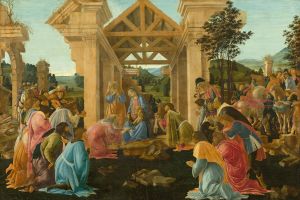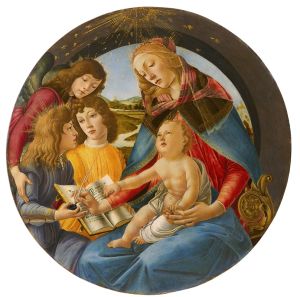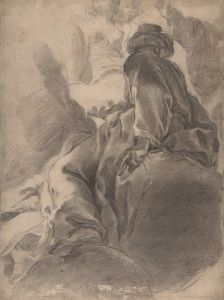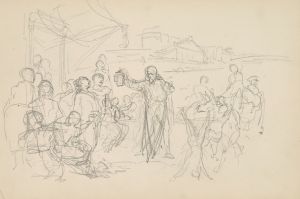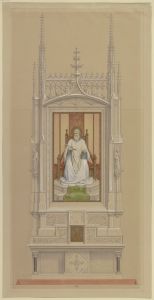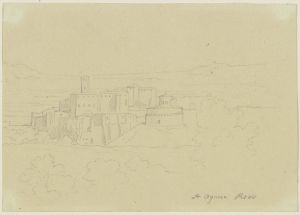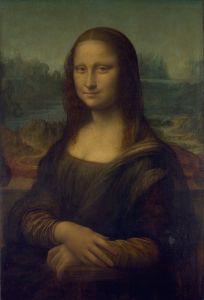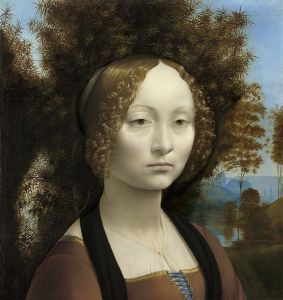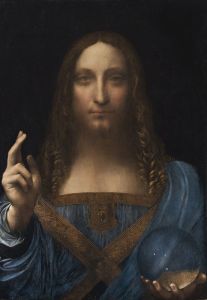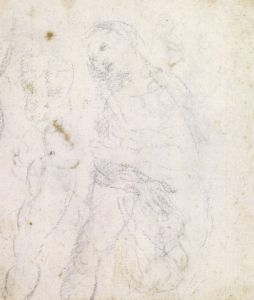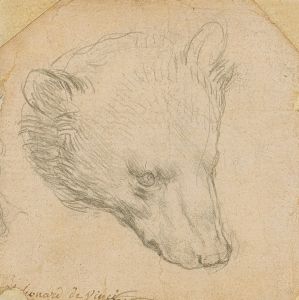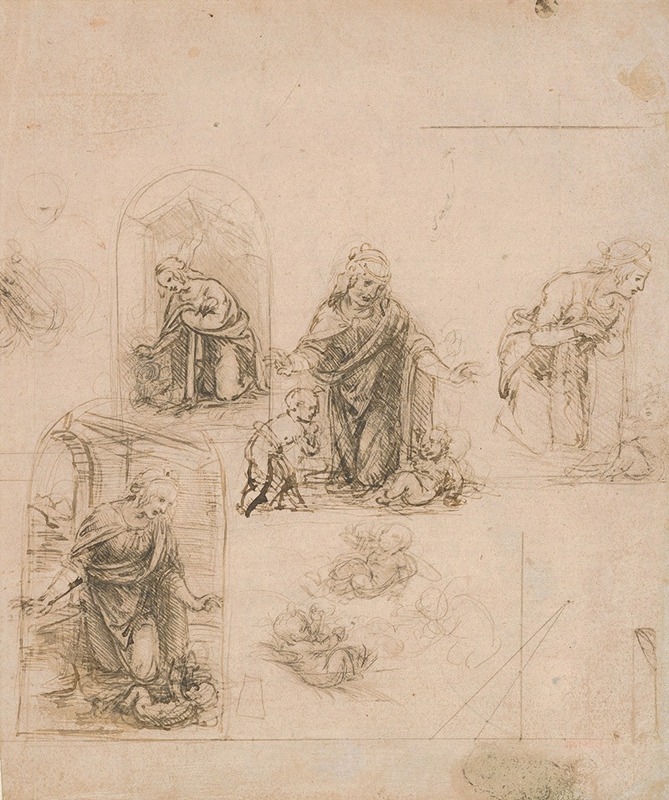
Compositional Sketches for the Virgin Adoring the Christ Child, with and without the Infant St. John the Baptist; Diagram of a Perspectival Projection
A hand-painted replica of Leonardo da Vinci’s masterpiece Compositional Sketches for the Virgin Adoring the Christ Child, with and without the Infant St. John the Baptist; Diagram of a Perspectival Projection, meticulously crafted by professional artists to capture the true essence of the original. Each piece is created with museum-quality canvas and rare mineral pigments, carefully painted by experienced artists with delicate brushstrokes and rich, layered colors to perfectly recreate the texture of the original artwork. Unlike machine-printed reproductions, this hand-painted version brings the painting to life, infused with the artist’s emotions and skill in every stroke. Whether for personal collection or home decoration, it instantly elevates the artistic atmosphere of any space.
"Compositional Sketches for the Virgin Adoring the Christ Child, with and without the Infant St. John the Baptist; Diagram of a Perspectival Projection" is a drawing by the renowned Italian Renaissance artist Leonardo da Vinci. This work is part of Leonardo's extensive collection of sketches and studies that reflect his deep interest in both artistic composition and scientific inquiry.
Leonardo da Vinci (1452-1519) is widely celebrated for his contributions to art, science, and engineering. His sketches often served as preparatory studies for larger works or as explorations of various artistic and scientific concepts. The drawing in question combines two distinct elements: compositional sketches of religious figures and a diagram illustrating principles of perspective.
The compositional sketches depict the Virgin Mary adoring the Christ Child, with variations that include the presence and absence of the Infant St. John the Baptist. These studies are characteristic of Leonardo's meticulous approach to composition, where he explored different arrangements and interactions between the figures to achieve the desired emotional and visual impact. The inclusion of the Infant St. John the Baptist is a common theme in Renaissance art, symbolizing his role as the forerunner of Christ.
In addition to the religious sketches, the drawing features a diagram of a perspectival projection. This element underscores Leonardo's fascination with the principles of perspective, which were a significant focus of artistic and scientific study during the Renaissance. Leonardo's investigations into perspective were part of his broader interest in understanding and accurately representing the three-dimensional world on a two-dimensional surface. His work in this area contributed to the development of linear perspective, a technique that became fundamental to Western art.
Leonardo's integration of artistic and scientific elements in a single drawing exemplifies his holistic approach to knowledge. He did not see a division between art and science; instead, he viewed them as interconnected disciplines that could inform and enhance one another. This perspective is evident in many of his works, where he applied scientific principles to achieve greater realism and expressiveness in his art.
The drawing "Compositional Sketches for the Virgin Adoring the Christ Child, with and without the Infant St. John the Baptist; Diagram of a Perspectival Projection" is a testament to Leonardo's dual interests and his innovative spirit. It provides insight into his creative process and his relentless pursuit of understanding the natural world. While the exact date of this drawing is not specified, it is consistent with the style and themes that Leonardo explored throughout his career.
Leonardo's legacy as a master artist and scientist continues to be celebrated, and his drawings remain valuable resources for understanding the intersection of art and science during the Renaissance. This particular work is a fine example of how Leonardo's studies in composition and perspective contributed to the advancements in both fields, leaving a lasting impact on the history of art and science.





